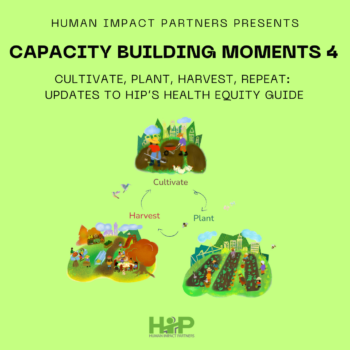| By Carlene Ervin |
This week’s post is written by HIP’s Social Media, Research, and Data Collection Summer Intern, Carlene Ervin. She is a sophomore at Yale University and a resident of Oakland, CA.
Since I was five, my foster mom told me I would go to college. She never went to college herself but she wholeheartedly believed it was the only way to break the cycle of poverty, substance abuse, and violence. She did everything she could to get me there, including enrolling me in a college prep charter school. After a while, I had no doubt I was going to college and no one could stop me. It wasn’t until I was older that I realized my expectations were not common for most foster youth in California.
As an intern at Human Impact Partners, I was excited to see HIP has researched the educational experiences of foster youth. Last year, HIP completed a research project to inform California’s Local Control Funding Formula (LCFF), a 2013 bill that completely overhauled K-12 school funding. LCFF increases funding for all schools, but reserves the biggest funding increases for low-income children, English language learners, and foster youth. According to HIP’s analysis, one in 150 school-aged children in California are currently in foster care. Sixty-seven percent of foster youth are removed from their homes because of neglect, and another 18 percent because of abuse.
Both of my parents struggled with substance abuse and had disabilities that limited job opportunities. When I was placed in foster care at age five, I was old enough to know something was wrong but too young to understand what exactly happened. First, I was placed in two different foster homes within three months. My third foster home became my forever home, the place I still come back to for school breaks.
Once I was finally settled, I learned that I loved learning. School soon became a refuge because I could escape in the process of learning new things. While in school, I had some behavioral issues. And I wasn’t alone: according to HIP’s report, compared to the general population, foster children have more behavior problems, more anxiety/depression disorders, attention problems, and aggressive behaviors.
Foster youth also have higher levels of mental health problems. Early life and chronic stress can lead to mental health disorders and substance abuse. These issues make it harder for many foster youth to thrive in school. One study found that only about a third of teens in foster care graduate from public school, compared to almost 60 percent of their peers.
When I got accepted to Yale University, I couldn’t believe it. I didn’t know many people who attended an Ivy League school. Most foster youth don’t even make it to a four-year university. In general, only 1 in 10 of foster youth attend college and of those, fewer than a third graduate in 4 to 6 years. These statistics are especially troubling because of education’s long-term impacts. People with more education are likely to live longer, have healthier babies and children, have better social networks of support, and earn more money.
Now I see that given my history, I am lucky to value education, and how that benefits my health. Growing up, I always heard stories of former foster youth who ended up in jail or living on the street. Now I see the links between education, health, and quality of life.
Happily, the State of California seems to get this. In recent years California has taken steps to address the education deficits for some of the most vulnerable youth. In addition to the local control funding law, in 2012 California extended foster care to age 21.
Although the LCFF program has had a rocky start, I think it has great potential to help foster youth succeed in school if it provides services such as mentorship and/or counseling. Although these policies are still fairly new, with greater accountability on the state’s part, they can help foster youth have a chance to improve their education and ultimately their health.




